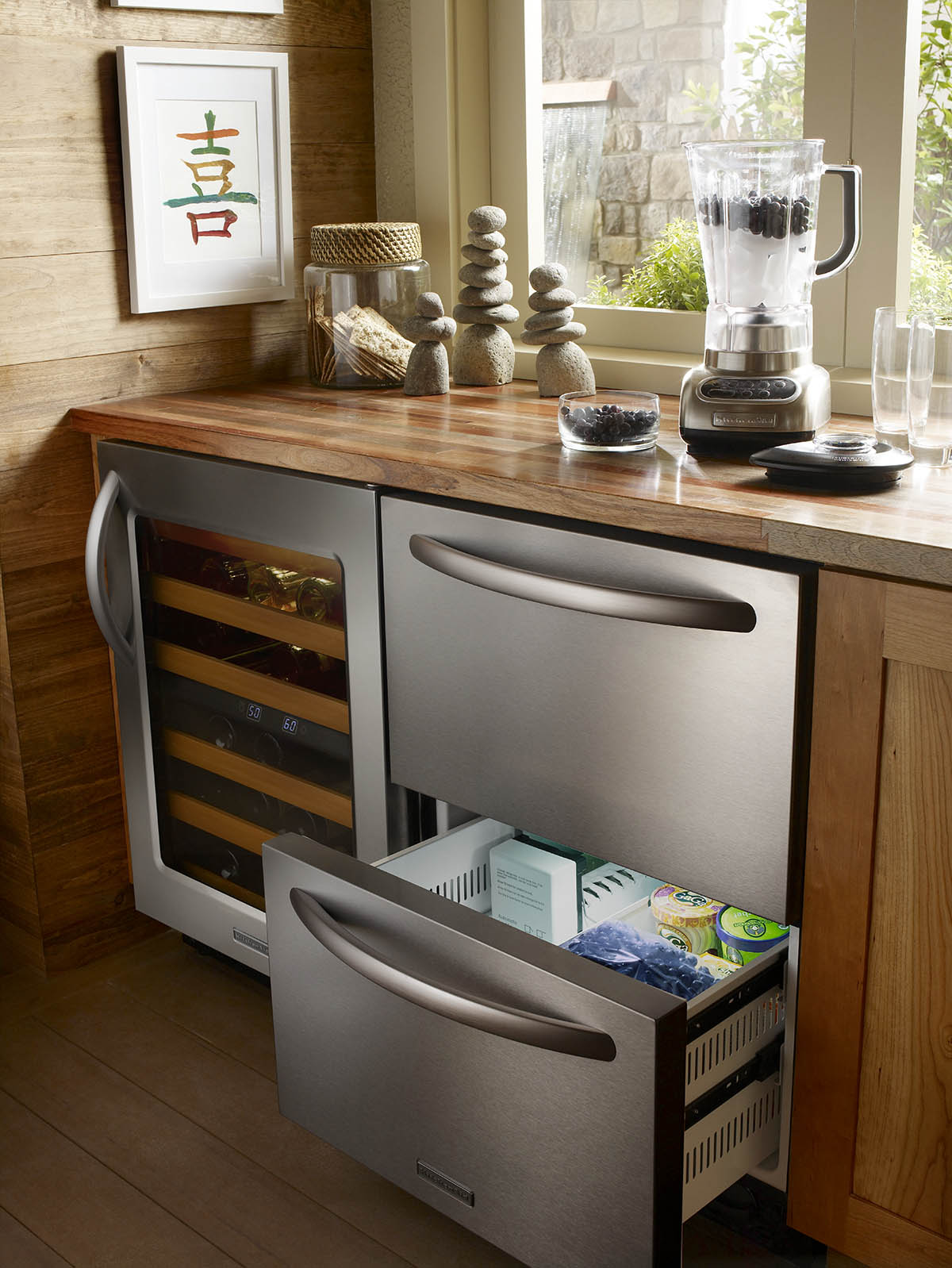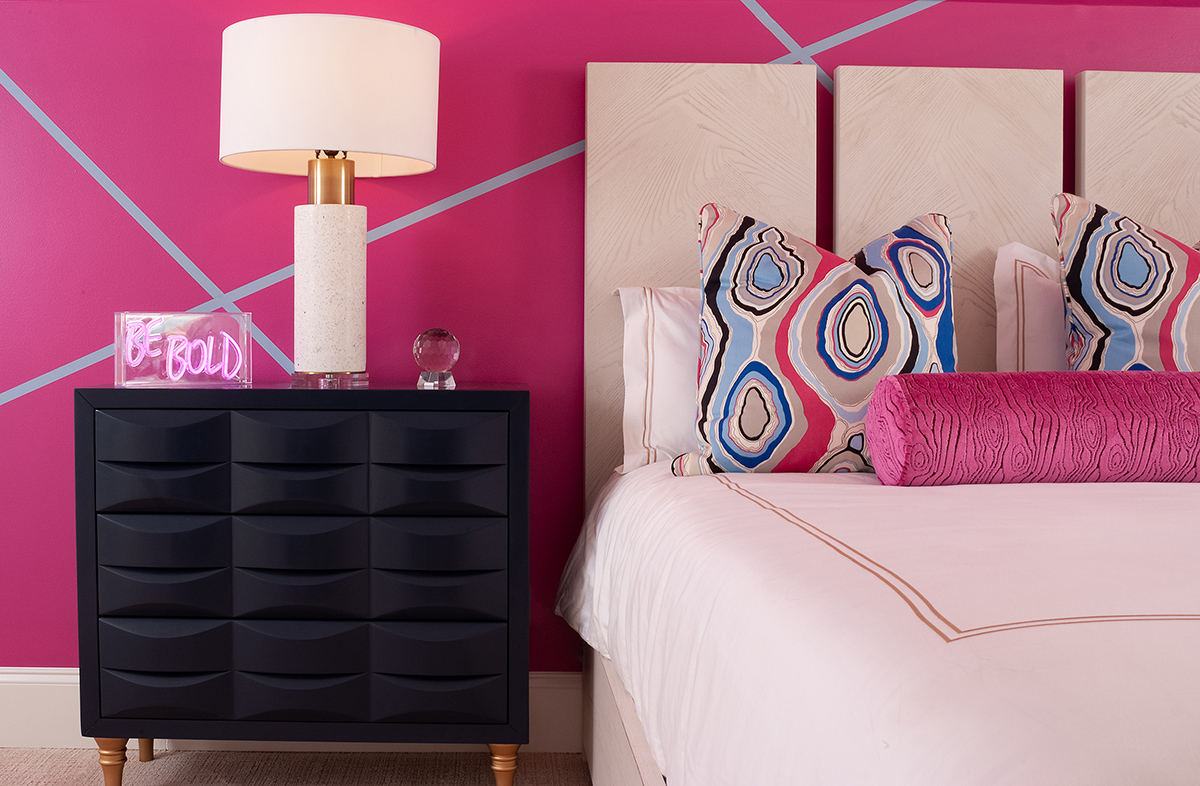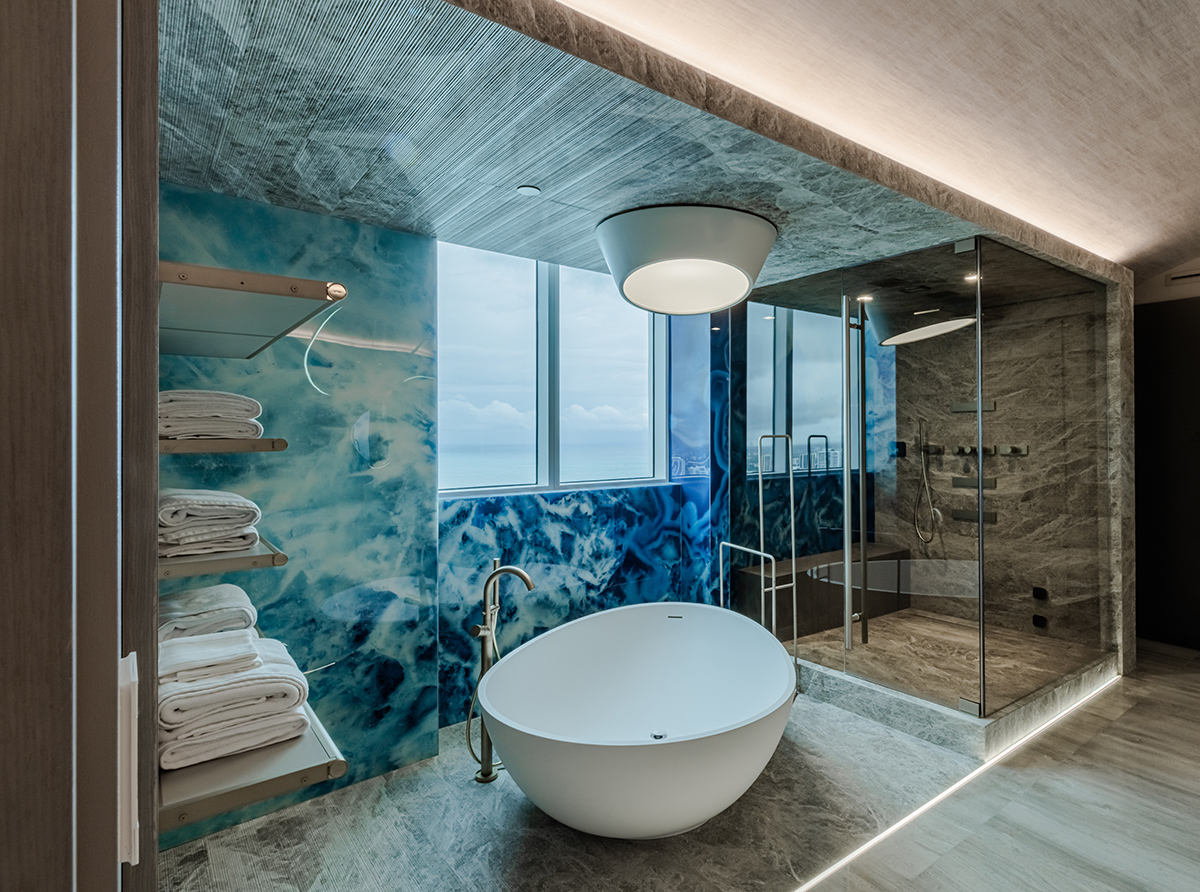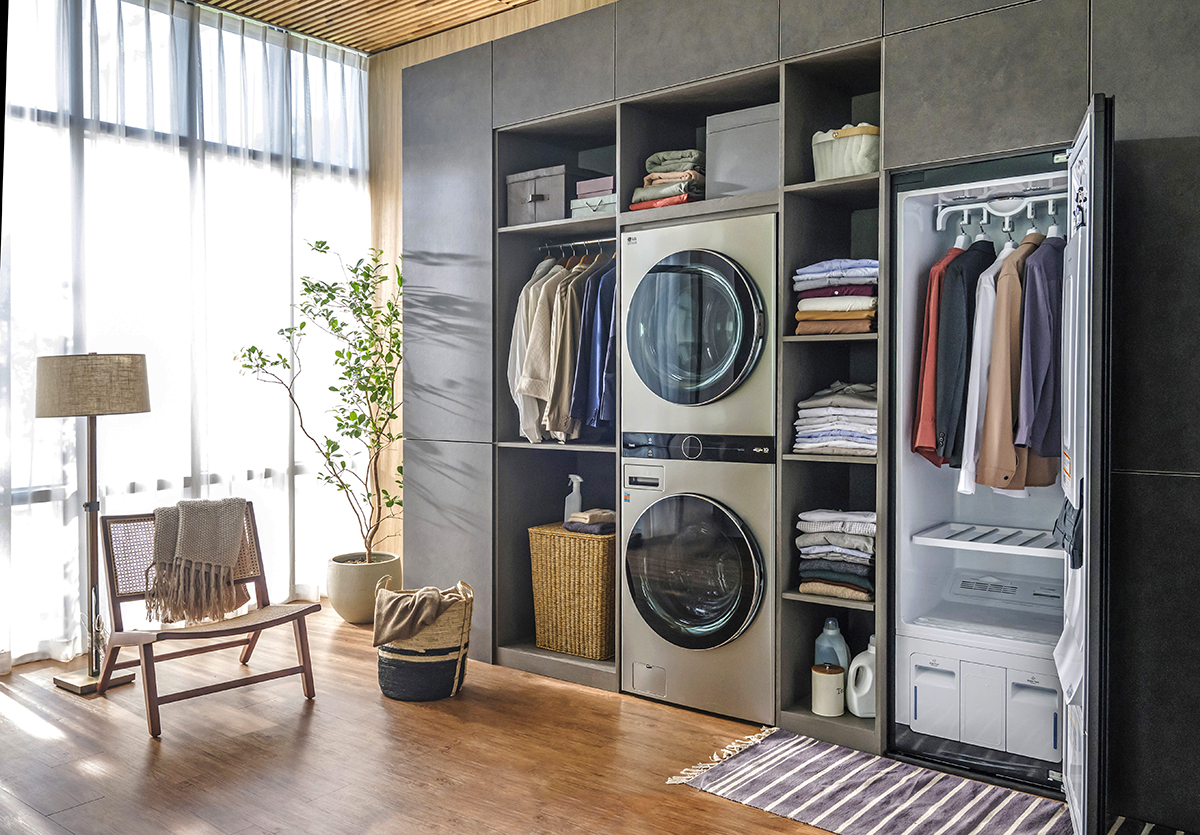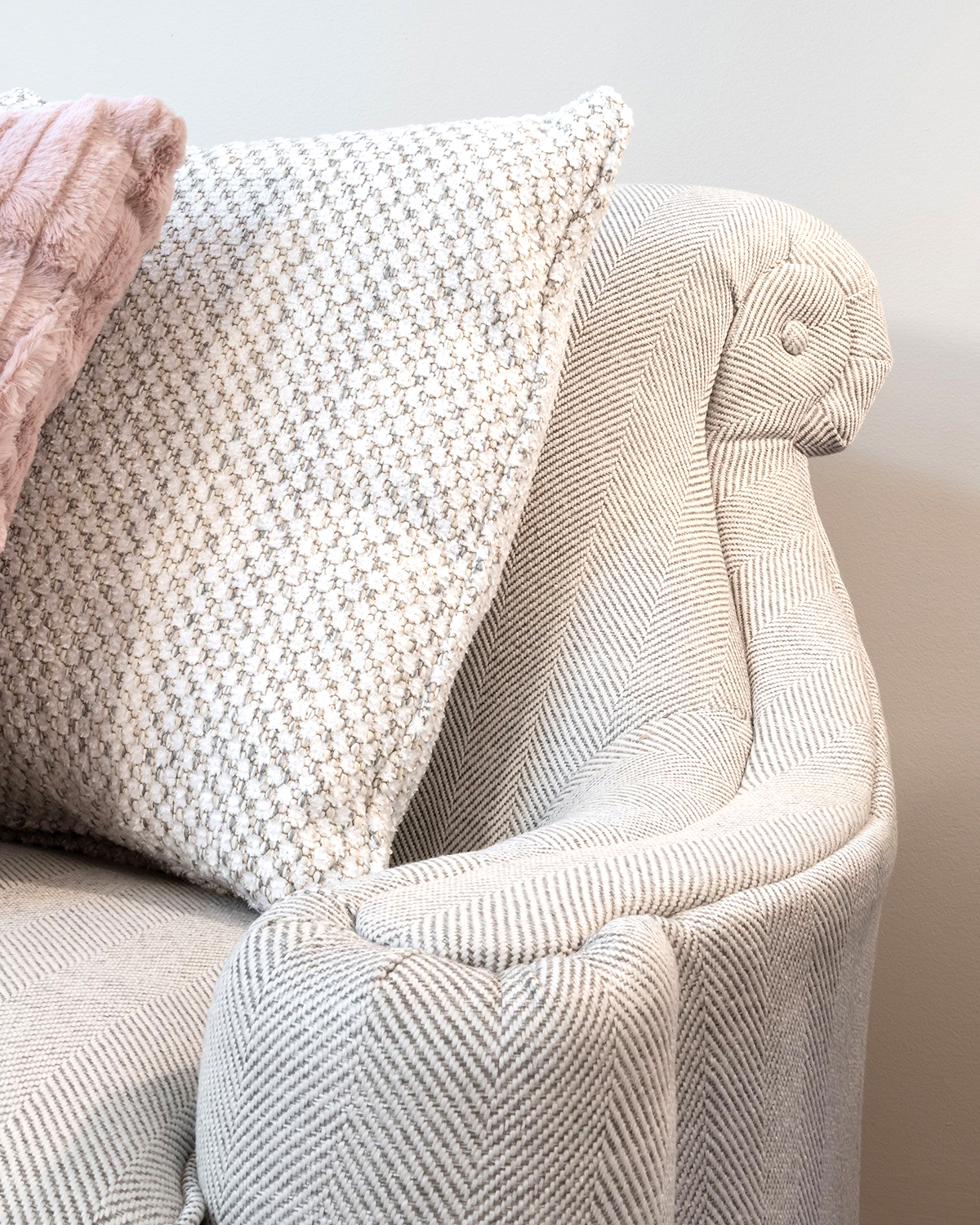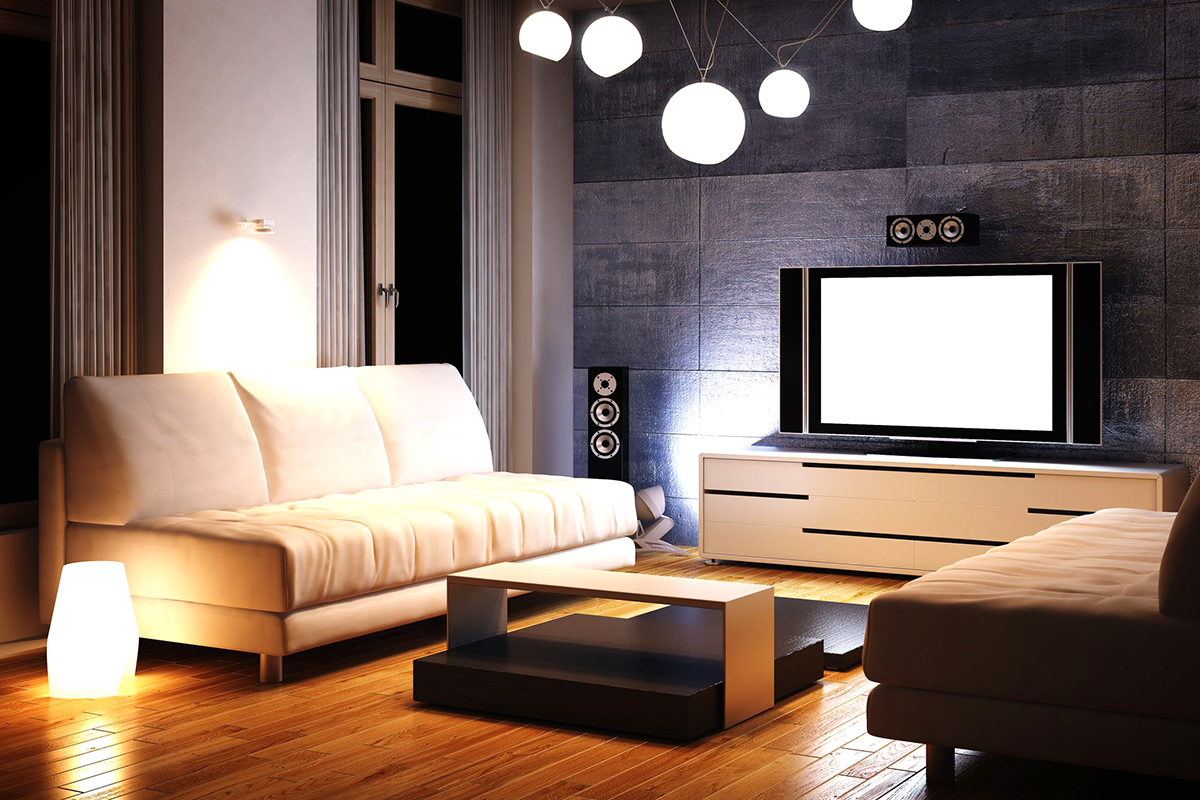WRITER | LIZ JERORE
PHOTOS | HOME CABINETRY & INTERIORS
Texture is an essential part of a designer’s vocabulary because a design without texture is visually uninteresting – it just falls flat.
But creating texture in a room involves much more than simply relying on a touch of rough-sawn wood or fringe on a random pillow. A successful design is an artful balance of contrasts like “rough and smooth” or “shiny and matte.” Just as importantly, it includes the layering of “visual texture” – the sort that is not tactile at all, such as “light and dark” or “highlight and shadow,” as achieved by great lighting design.
Here are six ways to add layered interest into your home:
1. Architectural “texture”
Consider adding architectural interest to your room with easy, affordable millwork: a reclaimed barnwood feature wall, clean white shiplap, box beams on your ceiling, or a classic wainscot paneling.
2. Contrast
These days, we gravitate to neutral, uncluttered spaces with a calm “spa-like” feel, and it’s too easy to forget about contrast. Contrast serves to ground a room or focus your eye on a specific feature. For example, a soft monochromatic room of light gray or white comes to life with a repetition of black accents; envision thin black frames on an art installation, a black metal base on a table, and a charcoal-colored porcelain floor.
3. Mix it up with furniture selection
Since you come in contact daily with your furniture, it’s important to carefully consider the finishes and fabric as you shop. Ask yourself how you live and what brings you joy. Will the feel of that sofa fabric be a pleasant experience? Will you enjoy running your hand on that rustic oak dining table, or would you prefer cool, smooth marble? To create a layered, textural depth to your room, introduce varied elements such as a raw linen sofa, colorful kilim pillows, a distressed leather chair, and a character wood coffee table with black iron base.
The trick is to mix rugged texture with smooth to balance. If a room is all highly textured, it can feel very heavy or oppressive. Just imagine a log home with knotty wood floors and ceilings, log furnishings, beams, and bulky accessories.
4. Add Interest with storied accessories
Consider creating a “gallery” to display your most prized collections. It could be rotated easily each season or whenever you have the whim to swap pieces. Mix framed art with found objects like stones, pottery, sculpture, or pieces of interesting driftwood. This is a terrific way to introduce a mix of immersive elements that tell your story.
5. Breathe life into your room with plants or cut flowers
Nature is healing, and absolutely nothing lifts a room like greenery or bright, cheerful flowers. Plants also improve the quality of the air.
6. Next-level lighting
Lighting is the most multilayered subject of all when it comes to texture, but it is often overlooked. A versatile plan should include overhead, task, and accent lighting with dimming capabilities, which allows complete control in “setting the mood” for your home. Warm white LED light (2700-3000 kelvin) produces a softer glow than cool white LED light (4000-5000 kelvin), which has a more contemporary feel that some may even consider harsh.
An ambient glow can transform an impersonal space into a dreamy, welcoming environment. Accent lighting draws the eye to focal points like art or a special stone feature wall. When choosing a chandelier or pendant, consider the intricate patterns of shadow and light created by the structure of the fixture. Interesting shadows cast on the walls and ceilings create added texture.
So start with one room, create a mood board, and above all, have fun! If you hit a snag, you may always consult a professional designer to review your ideas. Remember, your home is your nest … we encourage you to feather it!



